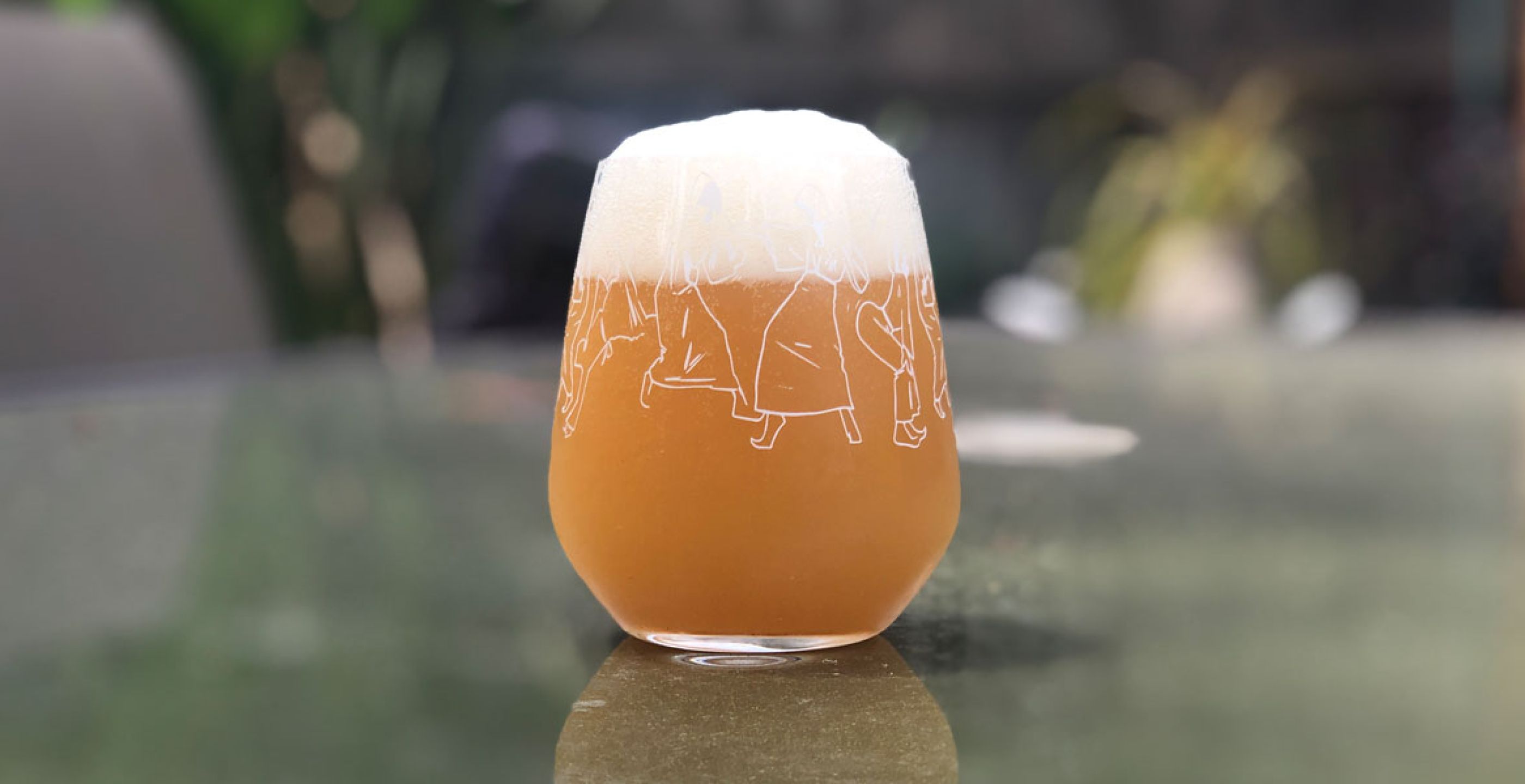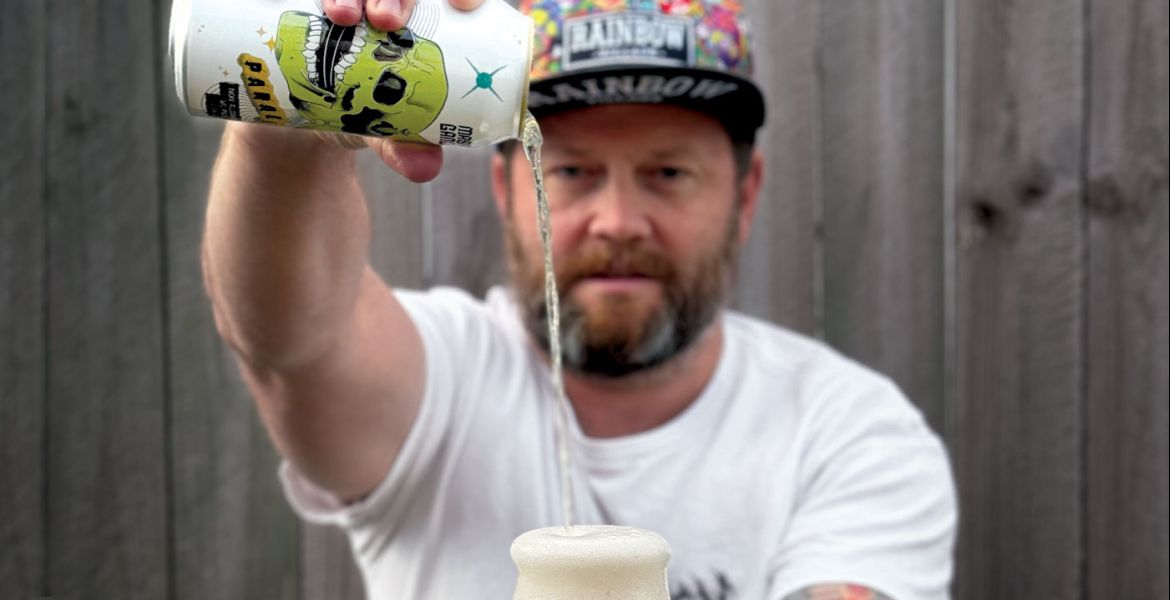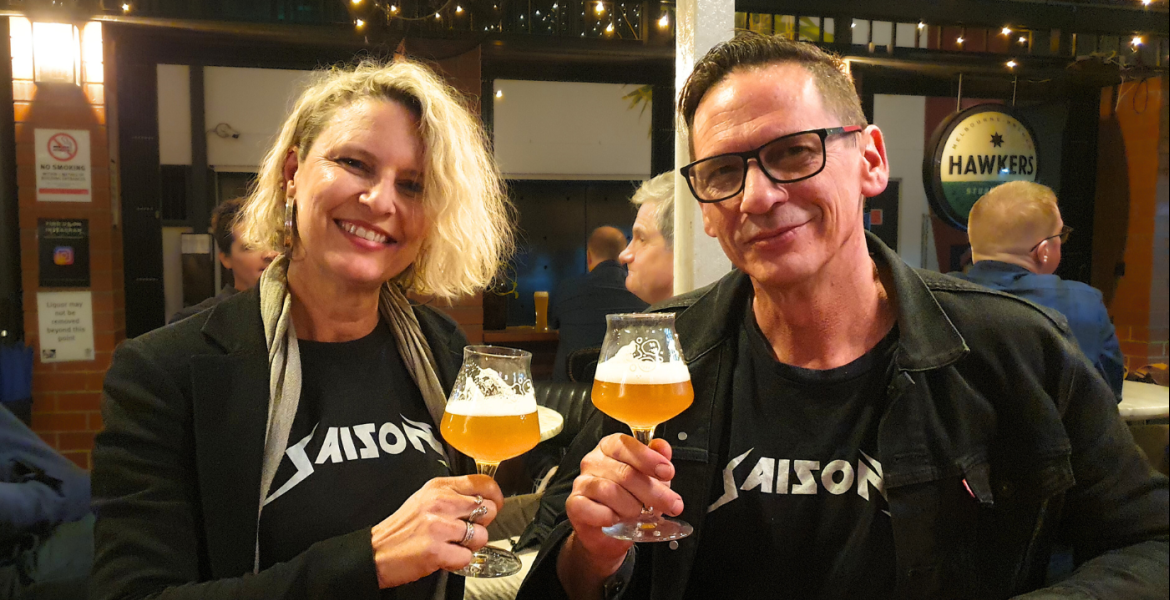There was a time not that long ago when people in the know questioned whether the rapid rise of hazy beers – then predominantly IPAs – would prove to be a mere fad or something more permanent. I guess we know the answer now: this juice train has plenty of steam.
It might have been New England IPAs that drove the change, one which has sprouted all manner of tentacles as hazy, cloudy, and purée-like beers have become significantly bigger – say hello to all those TDH DIPAs and TIPAs – and often arrive loaded with lactose, vanilla, fruit, modified grains and new-to-market yeast strains.
Such beers have also, for the most part, started to attain a more consistently high standard in Australia. Arguably, however, the biggest movement in the wider world of haze is downwards. While you've been able to find the odd hazy pale ale for a few years, not many were core range offerings. That's far from the case now, with a growing number of breweries adding such a beer to their lineup every month.
What's more, there are brewers who believe it's the next big thing (or, perhaps, the big thing right now). Ballistic Beer backed their Hawaiian Haze to the hilt in 2020, with the beer now in more than 2,500 stores nationwide and a serious marketing push in parallel raising the beer's visibility – and firing it into the top ten of this year's GABS Hottest 100 Aussie Craft Beers.
Given the situation, it makes hazy pales the perfect choice for our first Getting Blind With Crafty tasting panel of 2021. So, before we gather our panel and set to work on a wide selection of Aussie offerings, we thought it wise to ask: "Just what is a hazy pale?"
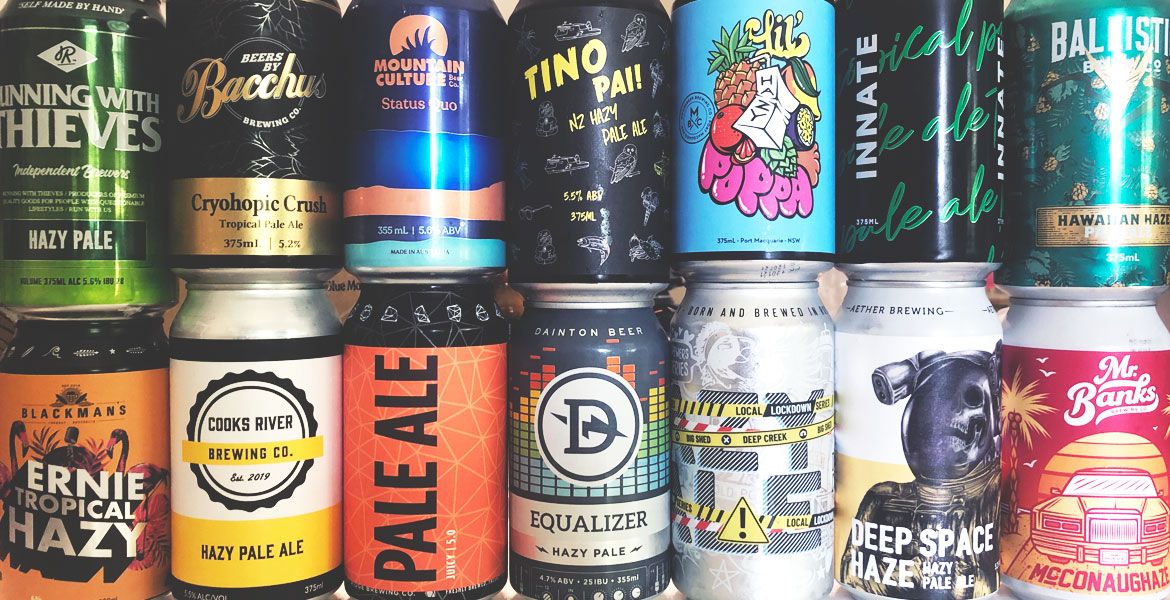
For the purposes of our tasting, we've cast a reasonably wide net to include beers roughly between low 4s and high 5s in terms of ABV that profess to be hazy or juicy or New England style pales. It's a reflection of the breadth of beers we've received from local brewers that make their haziness a central part of their pitch – some low on haze and darker in colour, many high in haze and at the paler end of pale – but also the relative youth of the category.
You won't find an official definition for such beers in many beer awards guidelines or, for example, within the latest issued by the globally-recognised Beer Judge Certification Program (BJCP). You do find an entry for "Juicy or Hazy Pale Ale" in the 2020 update of the America’s Brewers Association style guide, however.
It defines such beers broadly, stating cloudiness can range from low to high and perceived bitterness can be low to medium. The malt bill can include oats, wheat and other adjuncts to promote haziness, while fruity esters from the yeast used can be used to augment the hop profile.
The association's guidelines add:
The term “juicy” is frequently used to describe taste and aroma attributes often present in these beers which result from late, often very large, additions of hops. A juicy character is not required, however. Other hop-derived attributes such as citrus, pine, spice, floral or others may be present with or without the presence of juicy attributes.
It’s the diversity of the style that appeals to Range Brewing’s head brewer Mitch Pickford, who told The Crafty Pint he enjoys the unique spin breweries take with them.
“It’s an interesting style overall because there are so many variations,” he says. “That’s probably one of the best things about it: that it hasn’t really stuck to a guideline, it’s more of like a profile.”
He thinks such beers should be hazy, have a soft mouthfeel, and push juicy hops to the fore. And, within the myriad DDH pales he’s brewed over the past couple of years, he prefers to give them a decent bitterness to aid drinkability.
“I like to see a little bit of more upfront bitterness, even more than in our IPAs for instance,” he says.
“We would put more IBUs into the boil for sure than what we do with an IPA. That’s because it’s going to attenuate that little bit more and be that little bit drier, and bitterness accents that well and makes it a bit more refreshing – a bit less silky smooth and a bit more punchy and crushable.”
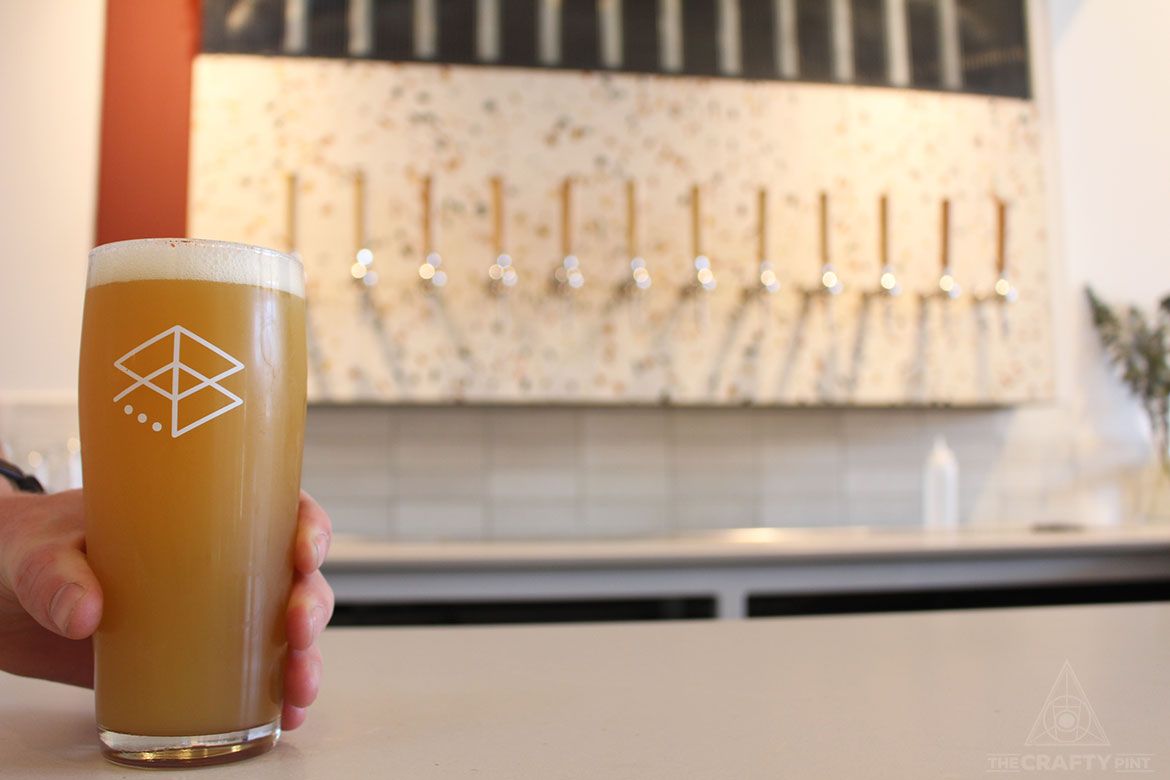
He says the lower ABV in hazy pales compared with IPAs can make it a challenge getting the balance right; there are also hop varieties he loves for the style and those he avoids.
“The balance there for us is about trying to create something that’s well rounded, in the fact that it’s still smooth, but it’s also easy to drink and retains the juicy characteristic from the hops,” he says.
“Hop wise, it’s all about getting that nice balance of tropical fruit; I find New Zealand hops are really good in the DDH pales.
“There are a lot of hops that you couldn’t use in them because they don’t give you the overall balance and definitely the way hops are utilised on the hot side has a huge effect on it.”
Steve “Hendo” Henderson from Rockstar Brewer adds that, from a brewer’s perspective, there’s a lot you need to get right in the beer, from picking the right raw ingredients to achieve the requisite haze, to hop selection, and nailing the water chemistry.
As for what he thinks makes a good one…
“For me, it’s got to be session strength, so you’re not going to get hammered too quickly. [It also] needs to be as fresh as possible or packaged well because it’s all about the hops and you can’t have that hop burn or vegetal part so you can just drink pints and pints of it.”
He say lower ABV hazies don’t require the bank-breaking hopping rates often seen in hazy IPAs and double IPAs; more than 20 grams per litre is commonplace in those bigger beers, with some beers featuring twice that amount.
“I don’t think you need that,” Hendo says. “But I certainly think if you employ the right techniques and apply a sense of balance then they’re pretty bloody good.”
Melbourne-based Hawkers are among those brewers to have introduced such a beer – theirs called, simply, Hazy Pale – to their year round offering in recent months. They've always featured hop forward beers prominently in their lineup – various pale ales, IPAs and XPAs have appeared both as Hawkers and offshoot brand Rover beers – and this latest addition has proven popular from the off.
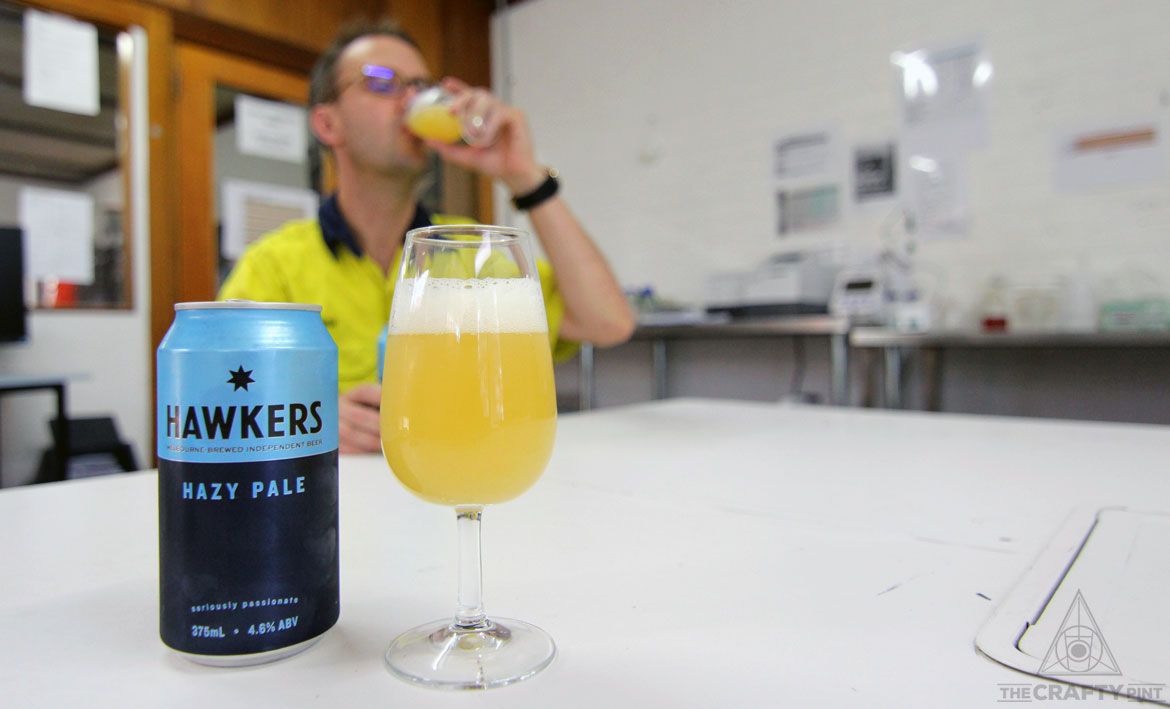
Head brewer Hamish McArthur agrees they should be low bitterness beers in which he says: "It's about getting the mouthfeel right. People are throwing a lot of hops at these beers, but we're very wary of hop creep and hop burn [an astringency left on the palate after you've swallowed].
"We keep hops out of the first couple of days of fermentation, then stick to a normal regime of dry-hopping. We found if we put too many hops upfront, we were getting that hop creep."
Thus, while they add a wide array of hop varieties to their Hazy Pale, the total volume is less than ten grams per litre – enough to give drinkers a fruitbowl of aromas and flavours to enjoy without risking any unpleasant side effects. Their collaborators on beers such as Tom Needs New Friends – Yakima Chief Hops offshoot Bale Breaker – also found there was a sweet spot when it came to hopping rates in their beers.
"They did blind tasting [adding] up to 24 grams per litre," Hamish says. "They found it was uneconomical to go any further as no one could tell the difference."
In terms of attaining the requisite haze, he says "there's a misconception that the haze is coming from a lot of hops"; within Hawkers' Hazy Pale it comes from the grain bill, the process as the beer makes its way through the brewery and, in particular, the Verdant yeast strain.
"[The Verdant yeast] gives us a very clean fermentation and a really good mouthfeel," he says, with oats in the grain bill rounding out and softening the beer too.
"We want the beer to be sessionable, [and to have] a good hop character without being offensive, because it's designed for mass consumption."
As for their rise in popularity, Hendo believes hazy pales are an obvious choice for many brewers given the runaway success of hazy IPAs combined with the fact excise tax rises as beers rise in alcohol content.
“It became a bit of a no-brainer, at least for Australian brewers,” he says, "to temper the ABV back to a more session strength to bring the cost down but keep the hop flavour and aroma.”
And, while the style might have descended from bigger IPAs, there’s another beer that led the way for modern hazy pales.
“You’ve really got to tip the cap to the original hazy pale ale," he says, "and that’s Stone & Wood Pacific Ale.”
Coopers might have a word to say on that front, but when it comes to fruity, easy-going, hop-driven hazy pale ales there's no doubt the legacy of Stone & Wood's game-changer is still growing. And, if you'd like to see what our panel makes of more than two dozen of its stylistic descendants, check back in on Monday...
You can view the Brewers Association guidelines for Juicy and Hazy Pale Ales here and find other style-based articles on The Crafty Pint here.




